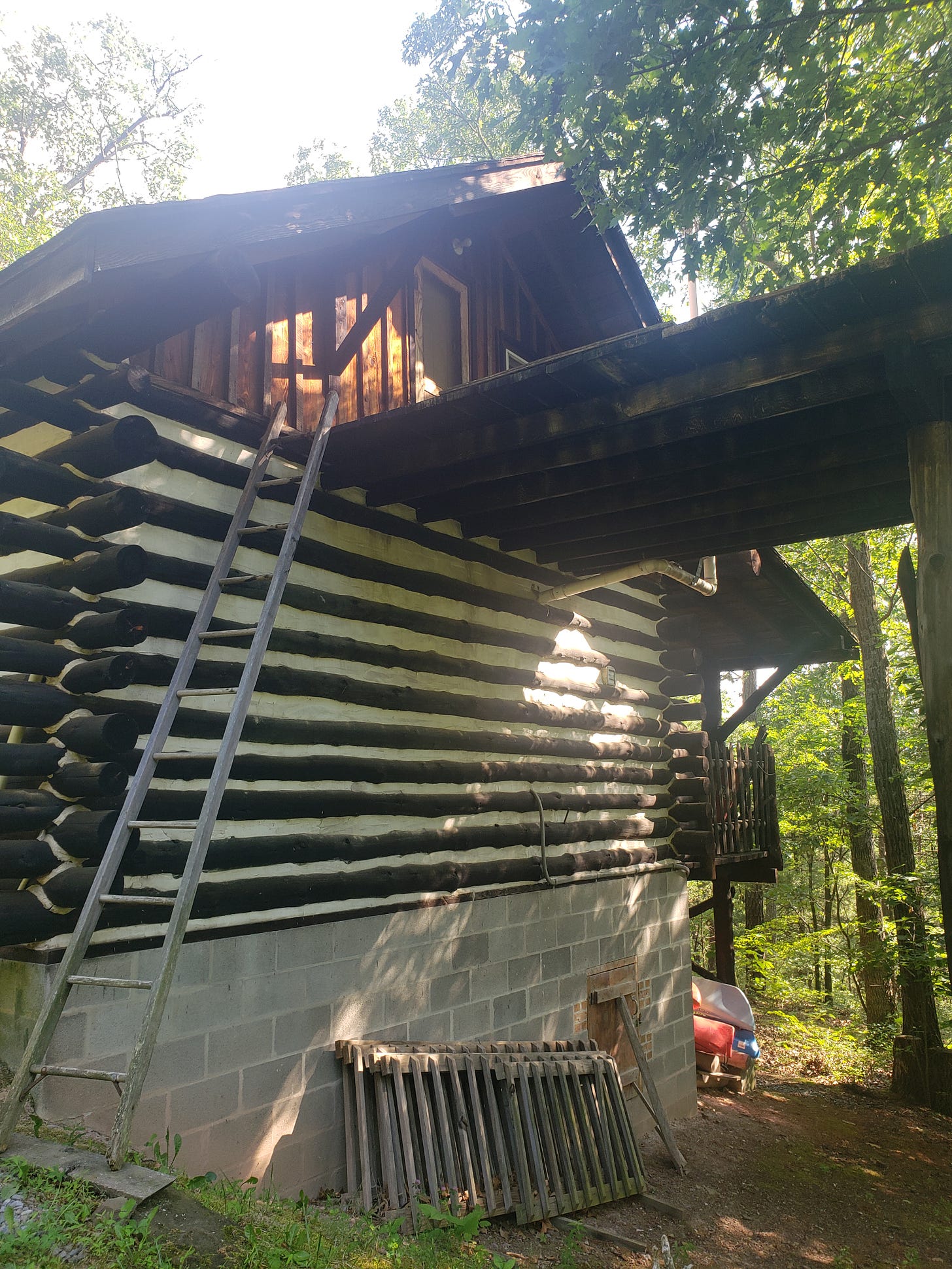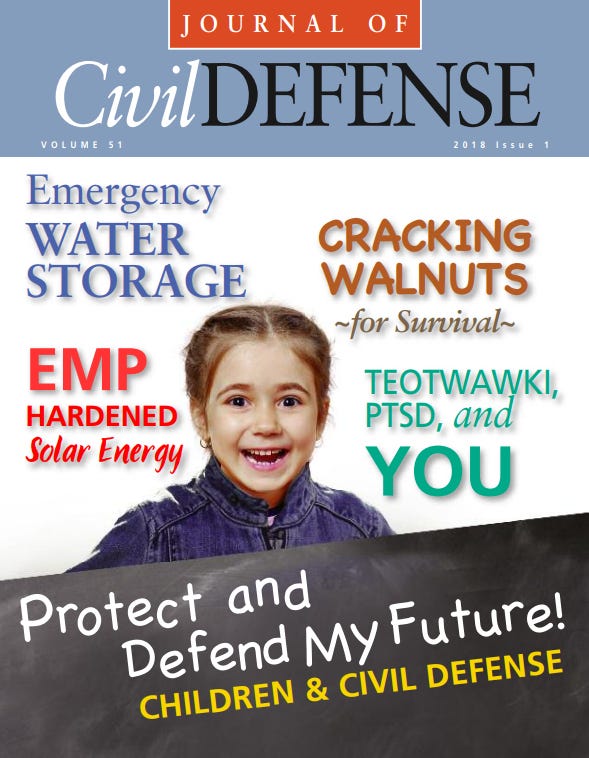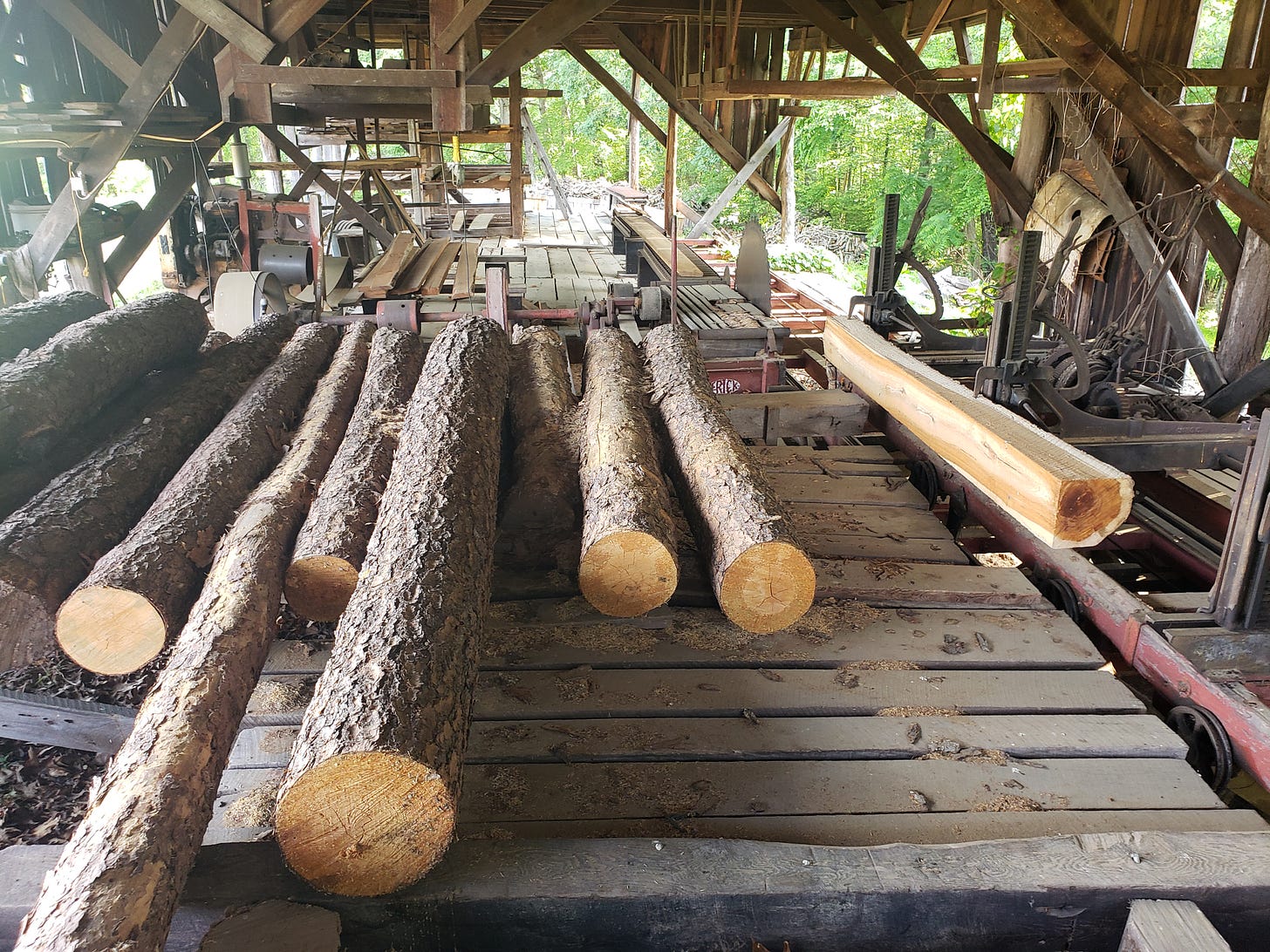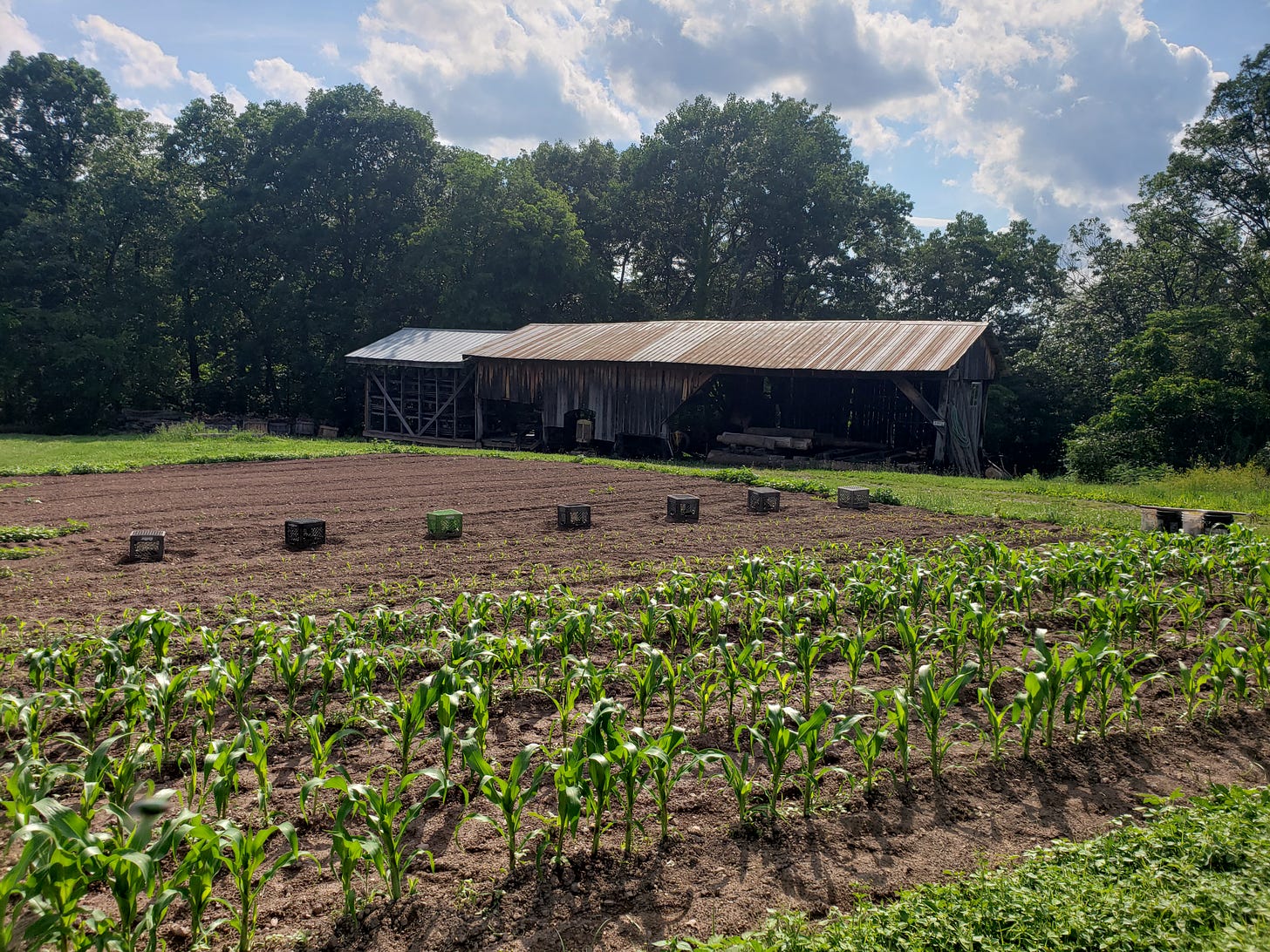
The History of The American Civil Defense Association
TACDA was formed in the early 1960′s in response to our nation's reliance on atomic weaponry as a centerpiece of foreign policy following World War II, up to and including the onset of the Cold War. During the Cold War, many feared a nuclear strike from the Soviet Union. In an attempt to protect American civilians, a civil defense (emergency relief by civilians) campaign emphasizing the use of fallout shelters commenced.
In response to the Soviet’s first atomic explosion and the Korean War, the Federal Civil Defense Administration was started in 1951. American citizens now had to imagine a new kind of war, and it was the Federal Civil Defense Administration’s job to encourage citizens to adapt to their nuclear present and future. Some doubted that physical protection from a nuclear explosion would be effective. Therefore, the Federal Civil Defense Administration received a small budget and was involved in only limited construction of shelters and the publishing of publicity materials.
In 1958, a report indicating the Soviet Union was nearing the nuclear arsenal held by the U.S. forced civil defense to be a priority. Spending increased. The Federal Civil Defense Administration became the Office of Civil and Defense Mobilization under President John F. Kennedy, who believed in and advocated civil defense.
The Cuban Missile Crisis, in October of 1962, resulted in a rapid, three-month program to improve civil defense, but after the administration of President Kennedy abruptly ended, civil defense was once again regarded as unimportant or wasteful and not funded adequately by our government.
The American Civil Defense Association was organized in 1962 by several doctors and professors from the University of Florida, including a Nobel Prize winner (Eugene Wigner) that recognized our country’s continued need for civil defense and the importance of personal emergency and disaster preparedness.
TACDA is a non-profit, non-political, 501(c)3 organization supported primarily by our members, the American public, and not the Federal Government.
The TACDA Mission
The mission of The American Civil Defense Association (TACDA) is to provide education, products and resources that empower American Citizens with a comprehensive understanding of reasonable preparedness strategies and techniques; promoting a self-reliant, pro-active approach to protecting themselves, their families and their communities in the event of nuclear, biological, chemical or other manmade and natural disasters.
The TACDA Board of Directors
With decades of experience in the fields of Civil Defense, Engineering, Medicine, Education, and the Military, the TACDA Board of Directors devote their time and efforts to increasing the awareness of Civil Defense issues in the United States and around the world. Meet the TACDA Board of Directors
TACDA has three main mission objectives:
Education and Information- We strive to alert our members about existing dangers and potential threats relating to both manmade and natural disasters and emergencies. These include, but are not limited to, nuclear, chemical, biological and pandemic threats, national security and defense issues and developments, domestic terrorism issues, natural and environmental threats, as well as current and relevant events abroad. TACDA’s main methods of alerting our members and the public to such issues are through the continual development of our web site, including the TACDA Academy, and through the bi-annual distribution of the Journal of Civil Defense, the official publication of The American Civil Defense Association.
Products and Services – In addition to providing our members with information on valid threats and practical preparedness solutions, we also work hard to assist them in equipping themselves for preparedness against all types of natural and manmade disasters and emergency situations. TACDA provides access to preparedness supplies and products that will help enable our members to prepare physically, psychologically, and emotionally for natural and manmade disasters. Visit the The Survival Store for more information about the products and supplies available to you and your family.
Local and National Resources – TACDA provides opportunities for our members to locate groups and organizations that share their interest and expertise related to disaster and emergency preparedness. Although TACDA does not directly endorse nor support these groups, we understand people want to get together with other like-minded people that share their same interests, concerns and beliefs – not only on the web, but face-to-face as well. For more information on local and national resources, visit our Resources and Links area.
TACDA Membership
TACDA’s member base is currently comprised of individuals and families from all walks of life, all sharing the common goal of preparing themselves, their families, and their communities against natural and manmade disasters.
TACDA is supported, in part, by the annual contributions of our members. TACDA Memberships are currently FREE, and available to any and all who wish to join. Donations are always appreciated and fully tax deductible. For more information, visit the TACDA Membership page.
Why I Believe in the TACDA Civil Defense Mission
The American Civil Defense Association (TACDA) offers serious instruction in the art of civil defense. I believe so deeply in the TACDA mission that I have donated thousands of hours to promoting the charity. I am the volunteer vice president of The American Civil Defense Association.
I started writing articles for the Journal of Civil Defense in 2008, was invited to join the Board of Directors, and eventually invited to be the position of vice president. I have not made a penny in this mission. In fact, I had to pay my own way to and from a TACDA Board of Directors meeting in Utah. But I have the satisfaction of knowing many Americans know how to keep themselves and their families safe in a natural and manmade disaster due to my work.
Over the years, I have written over a sixteen civil defense articles for the Journal of Civil Defense (JCD). My favorite article that I have written for JCD is Children and Civil Defense. I include excerpts below because civil defense is all about parents protecting their children.
Children and Civil Defense
We teach children from when they can begin to understand subjects to help them have a long, healthy, and prosperous life. Yet the subject of civil defense, essential to those goals, is completely neglected by public, private and home schools every day.
But for their good, we must educate children about civil defense. It is up to parents (and grandparents) to know civil defense and to educate their children. The media, government, and schools are not going to do it. But you can.
This American Tactical Civil Defense Substack seeks to help fill that gap for parents (and grandparents) by explaining some of the core areas of civil defense so you may teach your children. Greater exploration of the topics of civil defense may be explored by visiting the websites or reading the books suggested here.
Introduction to Civil Defense: Here is my Civil Defense Radio interview that provides a good introduction the field of civil defense and how it can help you and your family prepare for and respond to natural and manmade disasters.
Visit the National Museum of Civil Defense to discover the rich history of Civil Defense planning, equipment, strategy and policies in the United States. We had a NMCD board of directors meeting to create a valuable experience to learn the art and everyday practice of civil defense. The NMCD Facebook page is absolutely brimming with historic civil defense history, equipment, strategy, tactics and knowledge. Visit the NMCD Facebook page today.
Details will Save Your Life: When I did serious physical training in the United States Air Force Officer Training School (USAF/OTS) in 1982 in San Antonia, Texas, a young enlisted guy would lead us from a stage. Over the public address system, he would repeat over and over again in a thick Southern accent, "DETAILS WILL SAVE YOUR LIFE!!!"
Forty-two years later I have learned the truth of that saying. Many times.
Details like wearing the proper foot gear on your feet to carry you quickly during a manmade or natural disaster…especially flooding when all kinds of sharp objects and viruses, bacteria, germs, and dangerous chemicals are present in the flood waters.
It is essential to your safety and life. For example, I use Keen boots and Grip 6 wool socks to assure proper footing in any situation. Both are American made. It is a small detail, but comfortable, sturdy, dependable boots and a soft, germ fighting socks wick away sweat are essential to make sure I can perform at an optimal level in an emergency. Those dealing with the mud, debris, downed trees and telephone lines, displaced rocks and buildings in the aftermath of hurricane Helene are learning the importance of durable boots and socks right now.
Think of other details you need to address to survive, make a list, and address those details. Your family depends on you so prepare in advance.
"DETAILS WILL SAVE YOUR LIFE!!!"
Brief Definition of Civil Defense
Civil defense as used here includes all the tasks taken to ensure the safety of citizens from attack (chemical, biological, radiological and nuclear) as well as from the negative impacts of natural disasters.
At the very core of civil defense is the protection of children. In the United States, it is mostly done by unpaid volunteers in support of front-line emergency personnel with limited oversight by the government.
Civil Defense History: WWII to Today
Civil defense for children has been practiced from the beginning of time, but here we will briefly analyze civil defense from the end of World War II until today. I will then offer several ways to help children with various aspects of good civil defense planning, supplies, and tactics.
From the end of World War II through the 1950’s and 1960’s, the emphasis was on training children on how to “duck and cover” or find shelter from incoming nuclear weapons. There was also an emphasis on building shelters often in the basement or backyard. Fallout shelters were built because nuclear war at the time were a good possibility and they were one way to reduce the loss of life should the unthinkable happen.
For the Duck and Cover film that was widely shown to children in the 1950’s and 1960’s, see:
For fallout shelter videos, see: History Brief: For Family Fallout Shelters, see the History Brief at:
Today there are many YouTube videos mocking these and similar civil defense videos, viewing them as laughable because the nuclear war they prepared for never happened or the shelters and supplies gathered were never going to save anyone.
I disagree.
Given the international tensions at the time and how close we came to nuclear war (I know a Marine who was in Guantanamo Bay and another who was in Florida ready to deploy during the Cuban Missile Crisis) both assure me we were one call away from a nuclear war at that time), those preparations were prudent. And the past year we have come close to nuclear war due to the Ukraine/Russia and Israel/Hamas/Hizballah/Iran/Houthi/ conflicts and that will only come out in the future.
Moreover, preparing to live by preparing to deal with known contingencies (civil defense) has been essential to human survival for thousands of years.
And before laughing too hard, consider that citizens throughout history have known the multitude of threats and have taken prudent measures to prepare to meet and overcome them. How many citizens can say the same today? Witness the panic buying when hurricanes approach as evidence.
The Elite Engage in Civil Defense….So Should You
As proof, the Carnegie Corporation just gave a huge sum of money to a junior professor named Alex Wellerstein at the Stevens Institute of Technology to “reinvent” civil defense (http://blog.nuclearsecrecy.com/2017/07/13/the-reinventing-civil-defense-project/) (https://reinventingcivildefense.org/
His Nuclear Secrecy Blog explores, in a highly cerebral and academic way, the history, reality, threat, potential use, impact and survival possibility of nukes.
Professor Wellerstein also created the NUKEMAP to see if you are in the blast zone should nuclear weapons rain down on your domicile. and the NUKEMAP. I actually entered my address in the NUKEMAP years ago to make sure my family would be outside the blast zones of Baltimore and Washington, DC. when I moved to Mt. Airy,
Not sure you can get more elite than the Carnegie Foundation. If they are spending large sums of money to analyze and promote (reinvent) civil defense, why not average Americans?
Moreover, the elites have built, and are building, multiple civil defense communities to ensure they survive a nuclear exchange. See here (https://www.realtor.com/news/trends/prepper-oasis-luxury-survivalist-community/, and here.
And the elite of the elite, Silicon Valley billionaires, have their survival communities ready, and if this is not a contemporary civil defense project, I don’t know what is.
On the natural disaster side, enter #naturaldisaster in X Ai Grok. You will be able to view thousands of videos of natural disasters. They happen somewhere on the earth every hour. You only know of the ones that affect you directly or that the media chooses to report, but they occur continuously on this dynamic, living, erupting planet.
So, natural disasters happen. Nuclear war has happened and will likely happen again. Let’s prepare. And live. And triumph. And be great at it! The life you save may be your own.
Here are a few ways you can prepare yourself, your children and grandchildren in civil defense. And you don’t have to have hundreds of thousands in funding from the Carnegie Foundation to do so.
Just use your family budget in a wise and prudent way. Ways to do so are below.
Planning for Civil Defense for Children
Kylene and Jonathan Jones, in Provident Prepper: Common Sense Guide to Emergency Preparedness, Self-Reliance and Provident Living, have written a book that comprehensively deals with civil defense. They provide free Action Plans for your family.
For example, Chapter 2 called, Preparing Children to Thrive in a Disaster, present in Plain English thee best thing you can do for your children, and their practical steps in this civil defense guide book will assist you.
Chapter 4, Family Emergency Plan: We Can Make It Together, details how to create a family emergency plan. They are clear about what I've observed for years: this is a parental responsibility that will pay off when the event happens, and it is a thankless task like many thankless parental tasks. See: The Provident Prepper: Common Sense Preparing for Emergencies.
The Civil Defense Community
Michael Mabee, who wrote The Civil Defense Book: Emergency Preparedness for a Rural or Suburban Community, takes a community civil defense approach. Children are part of a family, but they are also a part of a community. He argues, insightfully, that if the community civil defense is strong, there is a far greater chance children will survive and prosper.
The book examines how communities can prepare for and respond to nuclear, terrorist, hurricane, electromagnetic pulse (EMP), power outages, cyberattacks and other natural and man-made threats. See: https://www.amazon.com/Civil-Defense-Book-Emergency-Preparedness/dp/1974320944/ref=tmm_pap_swatch_0?_encoding=UTF8&qid=&sr=
Civil Defense for Children — Medical
Good civil defense planning for children involves medical planning beyond just simple first aid kits and training. To understand just how much greater medical needs for children are in disasters, see: The Storm Doctor: Joplin Tornado https://stormdoctor.blogspot.com/ ). You don’t ever want to be caught having your children looking at you plaintively with fear facing a major medical catastrophe and you don’t have the tools to handle it. Visit North American Rescue’s product with a mission website, especially for:
Trauma and First Aid Kits
Audio Bleeding Control Kits
Combat Application Tourniquets (CAT)
Burntec Burn Dressing
Bleeding Control Kits
Casualty Response Kits
Splinting and Immobilization Products
Medical and Surgical Products
They offer special forces-level medical products that will provide you with the equipment and tools you need to care for children in a civil defense emergency. See: North American Rescue
Civil Defense Supplies for Children
Because they are children, it will be mostly parents and adults gathering civil defense supplies. One option is the TACDA Store. For example, they sell Potassium Iodate (K103) to shield the thyroid and prevent it from absorbing radioactive iodine during a nuclear emergency. (Unfortunately, people in California during the Fukushima radioactive scare mostly bought knock-off pills that did not work.)
EMP Resistant Waterproof USB Drive Preloaded with TACDA Resources, Journal of Civil Defense, Faraday defense, EMP resistant waterproof USB drive preloaded with TACDA resources, radiation tablets, MET-TAG Triage, life straw, and so many products offered there are of great civil defense use for children. See: https://tacda.org/store/index.php/
Civil Defense — Children Need Clean Water
Water, of course, is essential to life and essential to children, especially for civil defense. Storing that water so that it is available when needed is even more essential. WaterBricks offers a storage medium that is durable, clean, safe, portable and designed to be conveniently stacked.
Each has a handle for easy use and transport and a spigot for drinking and practicing good hygiene. They can be frozen to extend the life of food or medicine in an emergency, and you can drink the fresh water when they melt. WaterBricks can also be used to store food, to build furniture and shelter, and as sandbags.
Find Fun Events like a Civil Defense Expo
Remember to keep it fun. For example, practice an emergency evacuation as a game. For the wee ones, this will be easy. For the bigger ones, it is more of a challenge, but it can be done.
One great event to do with your children or grandchildren is to take them to a civil defense expo in your community. It is usually called an Emergency Preparedness Expo. There are other such civil defense related activities (open house at a fire station (ours features toy trains at Christmas).
Keep your eyes open and you will find such civil defense related events to which you can take your children or grandchildren. See: https://poetslife.blogspot.com/2017/09/emergency-preparedness-expo_28.html Find the civil defense and emergency management apps that apply to your area.
It enables residents to access emergency information, alerts and preparedness guidance on the go. Download the app to all your children’s phones and then make a game of guessing how to find information. Some of the items featured in this app include emergency alerts, local weather and power outages, storm related closures, social media, traffic updates, Emergency Management contact information, preparedness guidance and an interactive emergency kit checklist.
Use your imagination and keep it fun. They will learn how to use it as a game and know how to use it in an emergency. For starters, read The Provident Prepper and the Civil Defense Book noted above. Both will provide practical steps to get your family ready for emergencies that are certain to happen.
Use the Internet
Use search engines on the Internet (https://brave.com/ and browsing are useful) to find additional civil defense resources and learning tools. Be aware that civil defense concepts, strategies, supplies and information may be found under emergency management, survival, prepping or other search terms more popular than civil defense.
Use the TACDA Website
The TACDA website has a very useful series of topics under the TACDA Academy tab. (Psychology of Civil Defense, Nuclear Weapons Effects, All Hazard Sheltering, Chemical/Biological Warfare, EMP (Electro-Magnetic Pulse) and Power Failure, Radiation, Natural Disasters, Food Storage, Water Purification, Sanitation, Cold Weather Survival, Evaluation and 72-Hour Kits, Communications, Alternative Energy and Fuel, Medical Preparedness, Triage and First Response, and Post Event Survival). All of these courses may be downloaded as a PDF so you may study them at your leisure.
YouTube has thousands of civil defense and emergency preparedness videos.
As with anything on the Internet, you must be careful to discern what is good material. For example, when I just searched under emergency preparedness, Keeping it Dutch in Pryor, OK has an instructional video on Hurricane Florence Category 4 Emergency Preparedness!?! How Do You Save the Farm Animals? is an excellent hurricane preparation video for those who own livestrock
Why Civil Defense for Children Matters
Disasters and emergencies happen every day. They are especially hard on children.
As I write this, hurricane Milton just barreled across Florida. A million parents had to abandon their homes and drive hundreds of thousands of children great distances to unfamiliar surroundings.
Ask yourself: Are you prepared to keep your children safe, fed, sheltered, healthy, and medically treated when the next Milton-like civil defense emergency strikes your family?
Learn civil defense and teach it to your children.
Start by using the information in this article and you will be.
Perhaps just start out by reading my article in the JCD "Farm Markets: Solution for American Food Shortages" and just try to devote 15 minutes a day to learning civil defense.
To Search TACDA's Vast 65-Year Library
To make that task easier, along with Roseanne Hassett our Executive Director, I spent many months uploading 60-years of prior TACDA civil defense articles to the TACDA website. I added deep search engine optimization terms to help you find exactly the civil defense expertise you want to learn.
Creatively Act on your own to Spread the Word about Civil Defense
If you need another view besides mine that you are on your own when it comes to natural and manmade disasters, if the fed non-response to those impacted by hurricane Helene is not enough to convince you, perhaps read Nobody is Coming to Save You: A Green Beret’s Guide to Getting Big Sh*t Done by Lt. Col. Scott Mann (Ret.)
As nobody is coming to save me and my family or you and your family, from my emergency funds, as a way of spreading the good news about civil defense tactics, I have printed up thousands of TACDA business cards and handed them out, mostly to Moms and men and women with small businesses, the backbone of the American Dream. Parents and those who work with their hands will rebuild the American nation. It is these remarkable people I try to educate about the necessity of self-reliance within a high-trust community.
Since the beginning of the Red Chinese bioweapon release, I have distributed over 8,000 TACDA cards one on one to other Americans. I have only had a few people refuse to take one. Americans are waking up to the reality of disasters and how they need to prepare for them.
So, 4,997 Americans were willing to take it to the benefit of themselves, their families, and their businesses. The demand for civil defense is there. It is just not being met.
If I can teach myself civil defense, so can you.
To honor my MIA uncle 1st Lt. Frank J. Curley and the Brashear Hit Parade Crew I show their photo on the back of my American Tactical Civil Defense card taken before they died in the South Pacific on February 10, 1945. I wanted to honor his service and his crew’s service and not just let his memory disappear like so many others who have served this nation so honorably, I spent 38 years going down blind research alleys to find about him and his last mission as my family would not talk about it as it was too painful.
Rather than just tell Frank’s WWII service story, I created a blog post that lists many useful links to help other MIA families find out about their loved ones. That way, they do not waste the time I did. What started as a blog post to honor him evolved into a “civil defense how to” over time. I knew a lot about civil defense and discovered very few other Americans did, so I decided to try to change that using a blog. God works in strange ways.
Do not waste time learning how to prepare for disasters. Much of what you need to learn how to prepare for disasters is found in current and past articles at American Tactical Civil Defense, The American Civil Defense Association, Poetslife on Blogspot, American Civil Defense by Bruce Curley on Subscribestar (mostly analyzing the Red Chinese bioweapon impacts) and in many other resources on Substack, YouTube, Rumble, and other places. Here are a few to get you started.
TACDA's Survival Store
TACDA sells a number of useful mitigation and preparedness products. Consider METTAG's if you need a triage card to note casualties. TACDA understand the fundamentals of emergency management which depend on details, like MET-TAGs.
I encourage you to join TACDA. If you do join you and your family will get a big return. Here is the contact information: TACDA, www.tacda.org, info@tacda.org, 800.425.5397,800.403.1369 (fax).
Also consider North American Rescue for Combat Application Tourniguet’s (CAT) tourniquet's, medical bags, and professional medical survival equipment to keep you and your family alive.
My own house burned down some years ago due to a defective circuit board on an electric mower. As you can see in the photo that was taken by a neighbor, it was a bad fire. Because we had adequate USAA insurance, we were able to rebuild a better house quickly.
The new house was beautiful, but I would give it all back not to have the memory of my wife being medivaced out to the Johns Hopkins Burn Unit. Disasters happen, and taking steps to be prepared is common sense. Fires, floods, earthquakes, windstorms, power outages, terrorist attacks and other natural and manmade disasters happen.
It's a story as old as the Bible.
Do you and your family and neighbors a favor and make sure you are prepared. Even if it never happens, it's like insurance. You never know you need it until you need it and then it is too late to get it. Mitigate and smile.
Monthly TACDA Civil Defense Zoom Meetings
TACDA conducts Zoom meetings on various civil defense topics monthly.
SUBSCRIBE To the TACDA YOUTUBE Channel for prior meetings. Click Here
2024 TACDA Civil Defense Zoom Meetings
2024 #1 January: TACDA Academy Training, Ch. 4, 'Chemical/Biological Warfare'
2024 #2 February: Infrastructure Vulnerability
2024 #3 March: How InfraGard is Protecting America's Critical Infrastructure
2024 #4 April: Post Event Survival
2024 #5 May: 21st Century Homeland Security and Civil Defense
2024 #6 June, #7 July, #8 August: Summer Break, No Meetings
2024 #9 September: Planning to Survive Emergencies and Disasters
2024 #10 October: Water Storage and Treatment
2024 #11 November: A General Intro to CERT, Thursday Nov. 14th at 6pm Utah time.
2024 #12 December: No meeting. Merry Christmas!!!
Natural and Manmade Disasters Happen Daily
Like volcanoes, other natural disasters have created monumental catastrophes. We have been dealing with these events for thousands of years. There are valuable lessons, tactics, principles, procedures, and policies learned from dealing with these natural disasters that we can apply to civil defense.
One article I wrote in Hazard Monthly (June 1984, p. 12) was titled, How FEMA Works With/Battles/Is Guided by Congress. It outlined the Byzantine process of how emergency management funding works its way through the U.S. House and Senate. That lesson from 1994 still apply today as we see in the aftermath of hurricane Helene.
Here are a few quotes from my Hazard Monthly in 1984.
At times, a program my be authorized and no funding is set aside to make it go. In that case, the program is as good as dead.
Accounts you read in the media oftentimes do not distinguish between authorizations and appropriations. Yet, they're quite different and can cause much confusion if not clarified from the very beginning. If you have any questions about any of these programs, contact a staffer on the particular Committee or Subcommittee that deals with it.
Funny...even though since 9/11 billions of dollars have been authorized, appropriated and spent on it, after being neglected so in the 1980's and 1990's, the valuable civil defense lessons, principles, procedures, and policies learned from our past experience (from early exploration in this continent to the present day) must, unfortunately, be relearned each generation.
And if you read the Old and New Testament, the lessons are all there.
It is human nature to want to ignore the painful lessons and to celebrate the fun lessons, but life is a mix and we need to prepare for, respond to, and mitigate life's emergencies, mindful of the past and anticipating the future.
Rejoice always, pray without ceasing, in everything give thanks; for this is the will of God in Christ Jesus for you. Share your civil defense gifts with others: It is a part of the great Golden Rule.
In so many words, the Holy Spirit told me, “You have a knowledge that saves lives and property. Share it with others. You serve with and through others in civil defense as in all earthly pursuits. And remember: Loners do not last long in civil defense.”
Practice Chivalry: Sacrifice for the women and children you love.
You survive with and through others: In manmade and natural disasters, loners go first. Do not be a loner. Reach out to others. More importantly, know who the others are who you need to survive and establish relationships with them now.
TACDA Resources
TACDA.ORG has disaster education coursework, years of the Journal of Civil Defense you can research, a blog, and many, many resources you can use to learn Civil Defense for you and your family. Please do. Below is just one example of the many resources we have archived since 1962.
How To Prepare for Natural and Manmade Disasters
Dr. Edward Teller (1908-2003)
In the most dangerous situation, we have chosen the most dangerous of courses…We have chosen not to face our danger!
Perhaps one of the most common misconceptions among Americans is that if a major wide-scale nuclear, biological or chemical disaster strikes, chances of survival would be extremely low.
In reality, however, this couldn’t be further from the truth. Many will survive, and most will not be prepared. There are many dangerous threats that do exist. However, for each threat, there are practical preparedness solutions that exist, as well.
Bonus 1: Life is Short, Enjoy the Ride
I am blessed to have very talented industrial audio engineers as sons who also play beautiful music on the weekends at microbreweries and vineyards. I love watching how much they make people laugh, sing, and smile, especially young parents with young children.
Here are their Instagram sites where they post their future shows. I attend most of their shows if you ever want to meetup to discuss civil defense over a microbrew.
Bonus 2: Maybe Order Starlink for Reliable Comms
Starlink is a game changer as great as the original telephone. While spending countless hours viewing multiple YouTube videos of cell phone outages and telephone lines down due to hurricanes Helene and Milton in Florida and Appalachia, I was encouraged by a number of remarkable Americans like Shawn Hendrix @TheShawnHendrix
and Nick Sortor
@nicksortor who drove into the chaos and washed out highways and destroyed roads and immediately distributed Starlink terminals to the suffering.
What a miracle. Those in remote areas, and especially those with no connection to the outside world due to the hurricane’s extreme destruction, due to Starlink terminals, were able to:
Communicate with their fellow Americans to call for help
Organize search and rescue efforts to save lives
Direct relief supplies of water food and medicine to save lives
Notify loved ones of losses and reassure family they were still alive
Provide Starlink terminals to firefighters, EMT’s, police, sheriffs, church pasters, skilled construction workers, and all those who aid in the immediate recovery effort.
I already knew about how Starlink had helped so many hundreds of thousands impacted by the Brazil flood of 2023. I also knew that Starlink was providing vital Internet learning opportunities for students in remote hollers in West Virginia. As Xai Grok tells it:
Starlink has been instrumental in providing high-speed internet to remote and underserved areas of West Virginia, significantly impacting educational opportunities for students in these regions. Here's how Starlink's service has influenced learning in West Virginia's remote areas:
Service Availability: Starlink's satellite internet service is now available across most of West Virginia, with the exception of the National Radio Quiet Zone, including areas around Green Bank, which restricts such services due to radio frequency interference concerns. This widespread availability means that students in remote areas, often referred to as "hollers," can now access online educational resources, participate in virtual classrooms, and engage in distance learning which was previously challenging or impossible due to poor internet connectivity.
Educational Impact: The introduction of Starlink has been described as a "game changer" for education in these remote regions. Students can now benefit from online learning platforms, educational videos, research, and interactive educational tools that require robust internet connectivity. This is particularly crucial during times when physical school attendance might be limited, like during natural disasters or pandemics.
Economic and Social Considerations: The availability of Starlink has not only transformed educational access but also has implications for social inclusion and economic development. Enhanced internet access can lead to better educational outcomes, which in turn can improve economic prospects for individuals in these areas.
Pricing and Accessibility: Starlink's service starts at around $90 to $120 a month, which might be offset by programs like the Affordable Connectivity Plan for eligible households, making it more accessible for low-income families. This pricing model, combined with no long-term contracts, allows families to adopt internet services more flexibly based on their economic situation.
Community and Recovery Efforts: Posts on X (formerly Twitter) from Starlink highlight initiatives where internet service has been provided for free for a period following natural disasters like hurricanes, indicating a potential model for how Starlink could support educational continuity in emergencies in West Virginia, although direct mentions related to educational recovery in West Virginia weren't found in the provided X posts.
So, I wanted a Starlink terminal and due to how remarkably it performed in Appalachia post-Helene, I finally pulled the trigger, ordered one, and it arrived today. I will keep you posted.




















